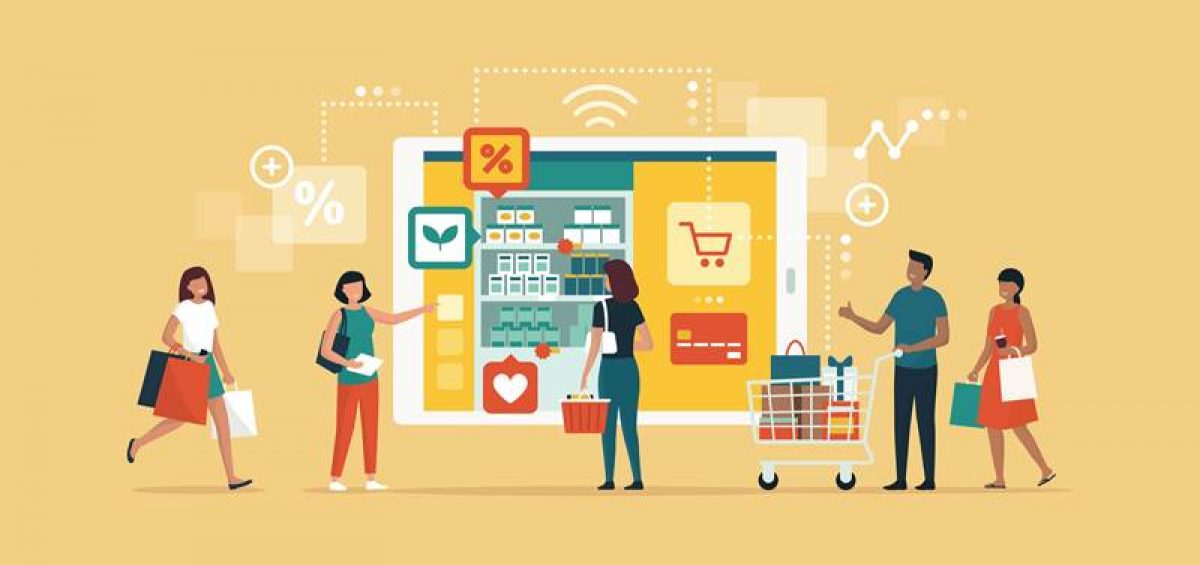E-commerce was a driving force in the world economy long before the pandemic struck. Consumers even began avoiding retail stores in favour of mobile delivery apps. However, COVID-19 only expedited the shift to e-commerce that was already happening.
In other words, we shouldn’t expect to see a curtailing of online shopping; it will likely only become more prevalent.
As major retailers and e-commerce giants like Amazon double down on the technologies that have sustained their revenue streams throughout the pandemic, the cost and convenience of the digital economy is likely to draw more consumers not fewer. This means traditional brick and mortar businesses will have to keep up, technologically speaking, if they hope to remain viable in the COVID-contextualized economy.
But what technologies are most likely to deliver the greatest value? In the online world, margins are too tight to simply deploy a bunch of systems and see what works. Going forward, retailers will have to carefully guide their investment toward tools and services delivering the best ROI.
And, from today’s vantage point, it seems like four key advancements are leading the e-commerce charge. Here they are:
1.Chatbots
Annoying as they can be sometimes, chatbots provide a conversational aspect to e-commerce, allowing customers to find what they want quickly and easily at low cost to the retailer.
As chatbot technology becomes more refined and better able to ingest and interpret both spoken and written language, we can expect them to augment the entire sales process, streamline customer service, collect data for marketing and trend prediction purposes and even generate sales leads. (Also read: Smart Data Management in a Post-Pandemic World.)
According to Ricky Hayes, co-founder of e-commerce solutions provider Debutify, chatbots can also tie into popular social media tools like Facebook Messenger to maintain clear lines of communication with customers no matter what device they are using.
This helps guide their decision-making, resolve any doubts or conflicts they are having, confirm shipping and perform a host of other duties that would otherwise require multiple customer service reps. The idea, of course, is not to replace human labor, but to make it more efficient by offloading routine tasks.
2.Mobile Platforms
New apps and services are emerging every day, all aimed at making it easier to attract customers and improve the shopping experience. The trend is so strong that some market analysts have elevated “m-commerce”, as mobile e-commerce has been dubbed, to a distinct new channel.
Rakesh Jain, CEO of app development firm MobiCommerce, says that the popularity of mobile is too great to ignore. As consumers turn to apps to generate income for themselves, their phones and other mobile devices become the centre of their financial worlds. In this environment, retailers stand to miss out on significant sales activity if they don’t engage mobile customers as a primary channel.
Already, mobile accounts for nearly three-quarters of all e-commerce transactions; and emerging 5G networks are expected to dramatically improve the function of mobile apps to make browsing and purchasing easier and more engaging.
3.Augmented/Virtual Reality
Part of the new and vibrant shopping experience e-commerce facilitates will reside within augmented and virtual reality environments. The underpinning of the metaverse, in fact, is a fully immersive ecosystem where users can play, socialize and shop as if it was the real world only better.
Augmented reality (AR) and virtual reality (VR) allow customers to see themselves in new clothes or behind the wheel of a new car, says technology journalist Jessica Wynne Lockhart. In fact, Snap Inc. estimates more than 100 million customers have shopped with AR already either online or in stores. The advent of shopping in the “Metaverse” is poised to be a gamechanger in the industry, bringing a new dimension of consumer experiences to an audience that perhaps has not been immersed in this level of tech.
While the technology is most popular as a gaming tool, more than three-quarters of a recent Deloitte survey expressed interest in adapting it to their everyday lives.
4.Artificial Intelligence
Artificial intelligence (AI) is quickly emerging as a key sales and marketing tool amid the COVID-19 pandemic.
It’s also making its way into the supply chain, where it can overcome many of the significant hurdles preventing products from reaching buyers in a timely fashion. According to All The Research, the market for AI in the logistics and supply chain sectors is growing at a compound annual rate of 24 per cent and is expected to top $12 billion by 2027. Activity is prevalent both on the supply side with companies like IBM, Google and Amazon investing heavily as well as the demand side, as UPS, FedEx and other carriers strive for ways to increase performance and lower costs.
Conclusion
Even with these technologies in hand, e-commerce will remain highly competitive as the 2020s unfold. New tech solutions put a lot of power into e-tailers’ hands to attract customers and close sales; but they also provide more flexibility for consumers to shop around, compare prices and track down that perfect item.
In the digital economy, all markets are global. This provides access to more buyers but introduces more rivals as well.




Leave a Comment